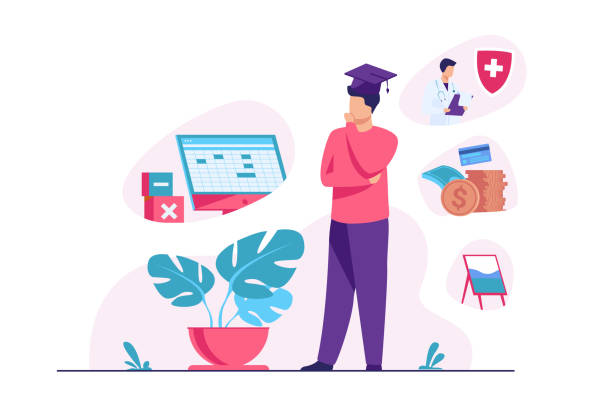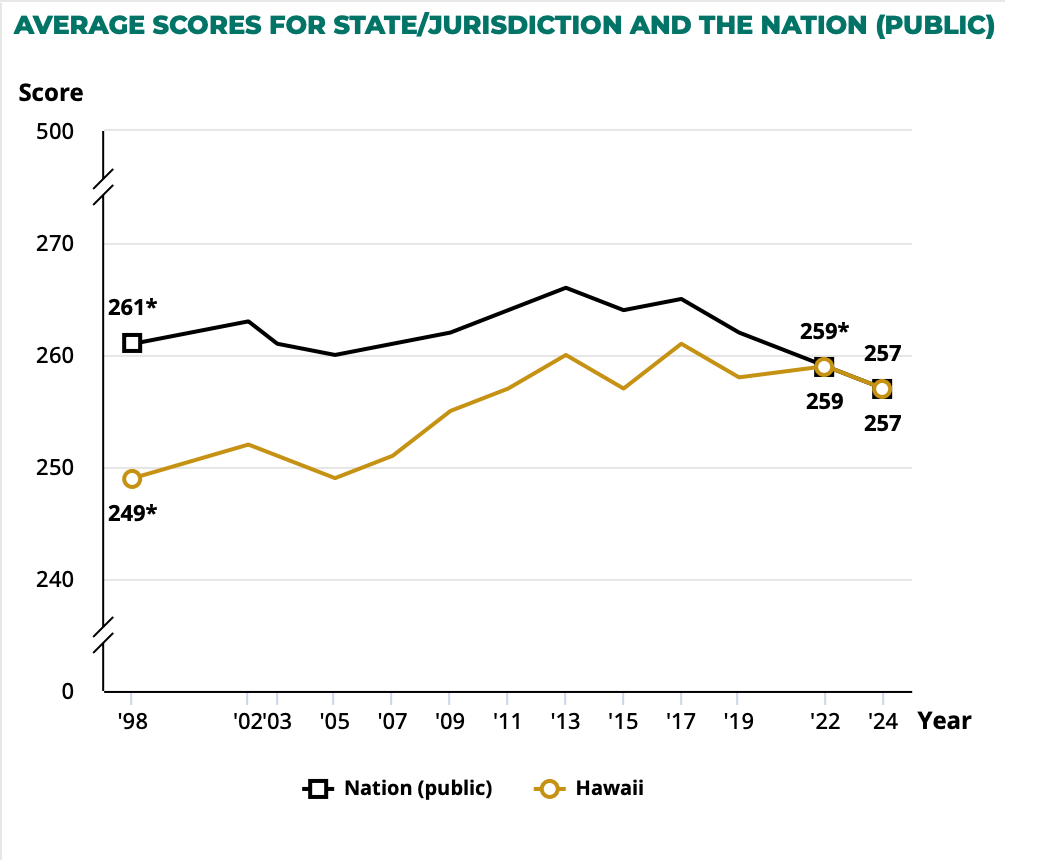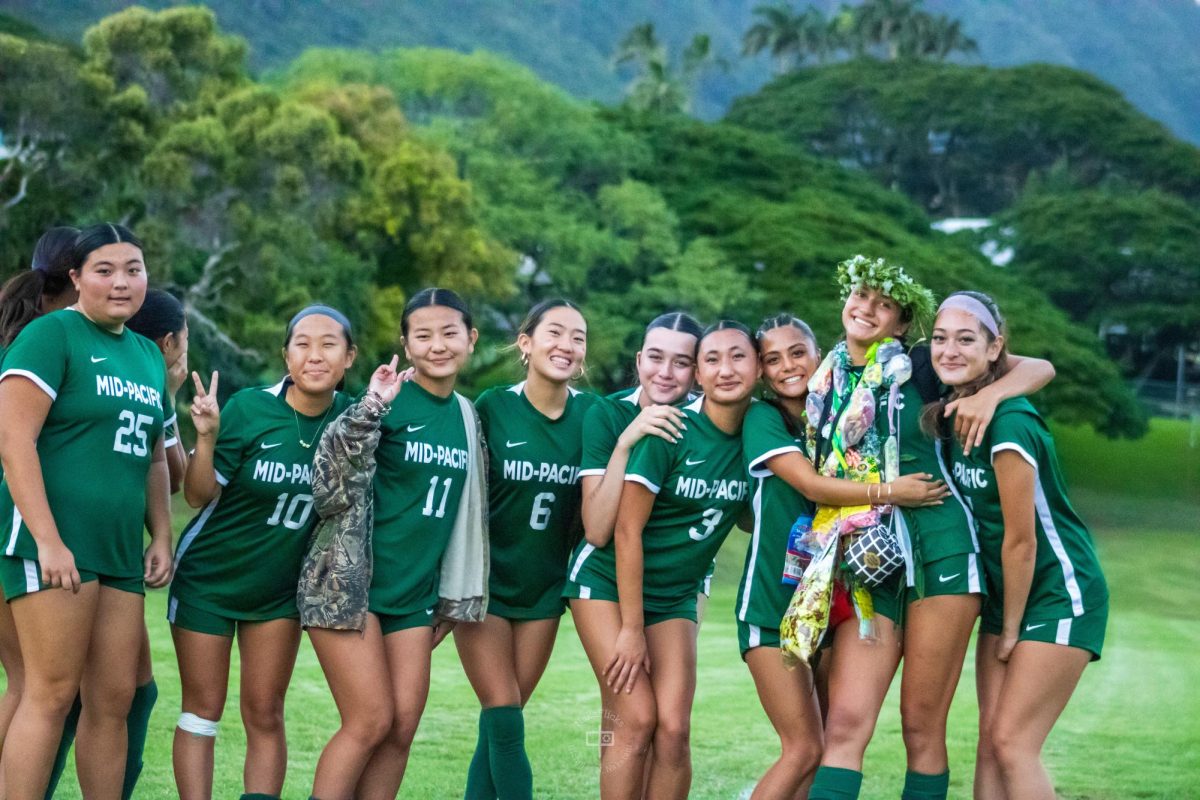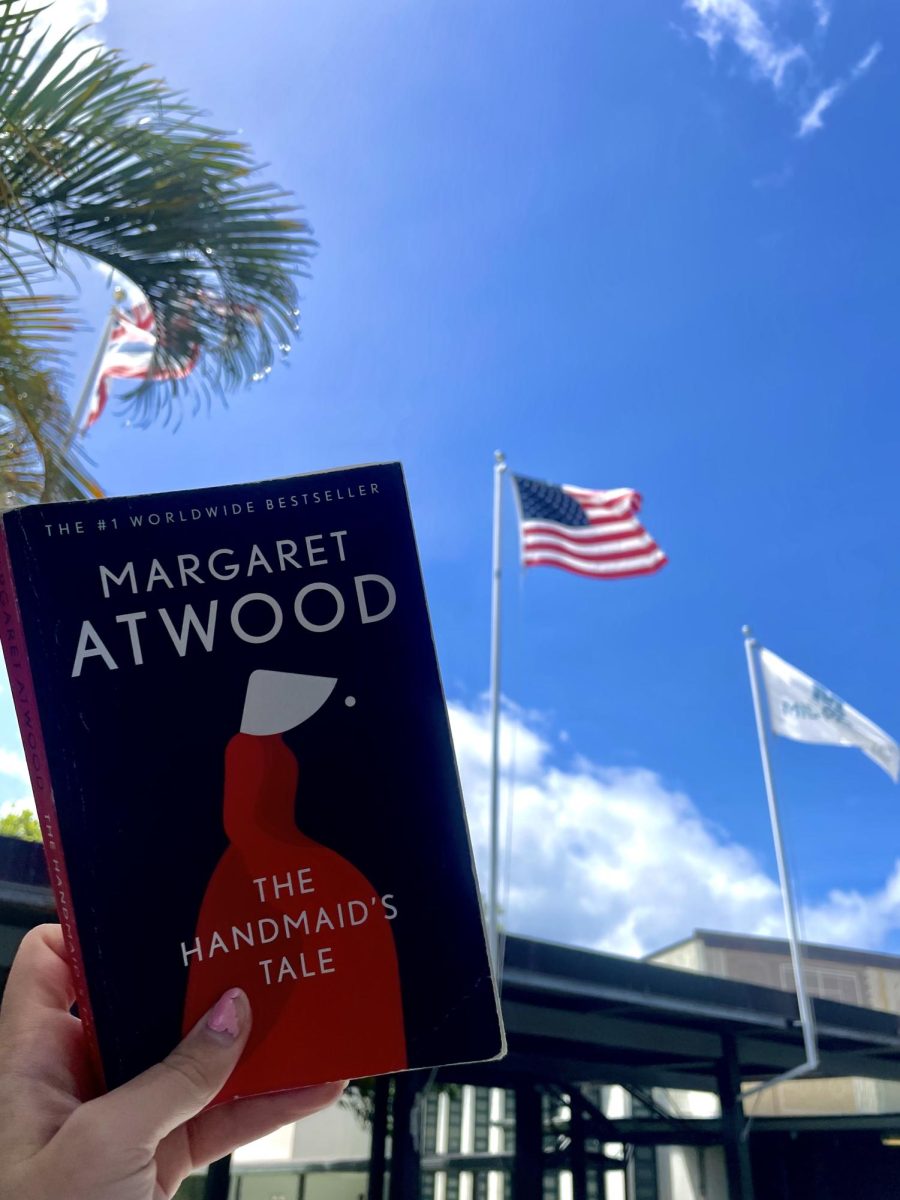College Counseling: Colleges aren’t universal. Why should college counseling be?
Young graduate imagining future occupations.
May 6, 2022
An estimated 33% of high schools in the US have college counseling programs meant to assist students get into the best school for them and their futures. Mid-Pacific falls into this minority, with three designated counselors who are appointed to help students prepare for and apply to colleges. However, left out of this statistic, is the quality of these programs.
While experience varies from student to student, there is a general consensus that Mid-Pacific’s college counseling programs are less than substantial in many departments. One program that has been falling short is the visual arts. The irony therein is that Mid-Pacific claims to be a heavily arts-focused college-prep school. I decided to interview a visual arts student, who preferred to stay anonymous, about how college counseling has helped them over their years at Mid-Pacific.
“As someone who is applying to art schools, it feels like the college counselors don’t really understand how to get me specifically into the schools and programs I want to go to,” the student said.
This is an anguish that is not only expressed by students, but by art teachers as well.
Mid-Pacific IB Art teacher, Jill Johnson, mentioned her own concerns with the program.
“I’ve had to help a lot of my seniors with their applications and portfolios because college counseling doesn’t seem to cover that,” she said.
Some programs like IB Arts and Digital Certificate have built portfolio building into the curriculum itself. It is one of the driving factors for a lot of students to go to these programs, and illustrates a need for this kind of support when applying to colleges.
My student interviewee echoed this when we talked. “When I was building my portfolio for college applications I had to do a lot of individual research on how to even do it,” they said. They also mentioned using YouTube videos of people who got into the schools they were applying to, so they could understand what schools wanted out of a portfolio.
“I think a lot of the stress I experienced while applying could have been alleviated if I had someone inside of school who understood the process,” they said.
So what can Mid-Pacific do to assist this vital, yet lacking, program for their students? I interviewed Jayme Anderson, a college counselor working outside of Mid-Pac, for her opinion on this situation. Anderson got into college counseling quite young, as it was something she found herself passionate about. She explained that this stemmed from not having a great college counseling experience herself.
“When I was in high school and applying to colleges, my sister who was a year older than me helped me through a lot of the process, because she had been through the same college counselors I was meeting with,” she elaborated.
Her school specifically had students who wanted to go to college lose that opportunity because of college counselors missing meetings, not submitting transcripts, etc. “I want to be able to help students who may need help that their schools aren’t providing,” she said. She further advised, “Getting to know students individually- taking notes, helping them, getting to know what’s practical for them” is what she’s found most effective for the vast majority of students she has worked with. It was also mentioned that getting to know students should happen in conversation, over time.
At the beginning of this school year, Mid-Pacific seniors were sent a questionnaire by their college counselors. This form included questions like- ‘What would you say your best qualities are?’ and ‘What kinds of programs do you want to go into in secondary school?’ The form was intended as an easy way for college counselors to get to know their students’ interests and such. While this seems well intentioned, it rubbed some students the wrong way.
The same visual arts students I interviewed before mentioned this: “It felt like a really rushed way to get to know the bare minimum about us individually.” They also mentioned how impersonal the questionnaire felt, as a meeting in person or even over zoom would have been a much smaller stressor on most students, and would have gotten the same information to the counselors. When meeting with Anderson, she noted that this was one of the largest red flags in most high school college counseling.
“When you know a student more personally, you can better assess what is better for their individual needs,” she said.
Moving forward, Mid-Pacific has an opportunity to improve their college counseling experience for upcoming high school students. One of the things that seemed evidently missing was a personal touch. Both students and professional college counselors noted that the current approach lacked this vital step that can alleviate a lot of stress on both counselors and students alike. However, Mid-Pacific’s largest shortcoming seems to lie in the visual art department. One option would be to have a college counselor who can specialize in portfolio building, applications, and all the parts that are unique to applying to art specialized schools. This would help students eliminate some of the inherent stress of senior year and applications, as they don’t have to go through the process of being their own college counselor.







